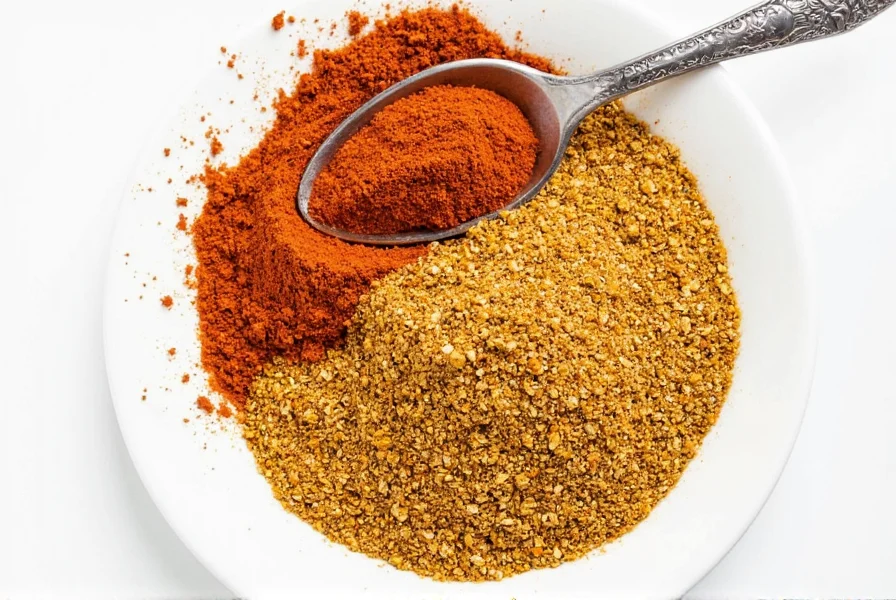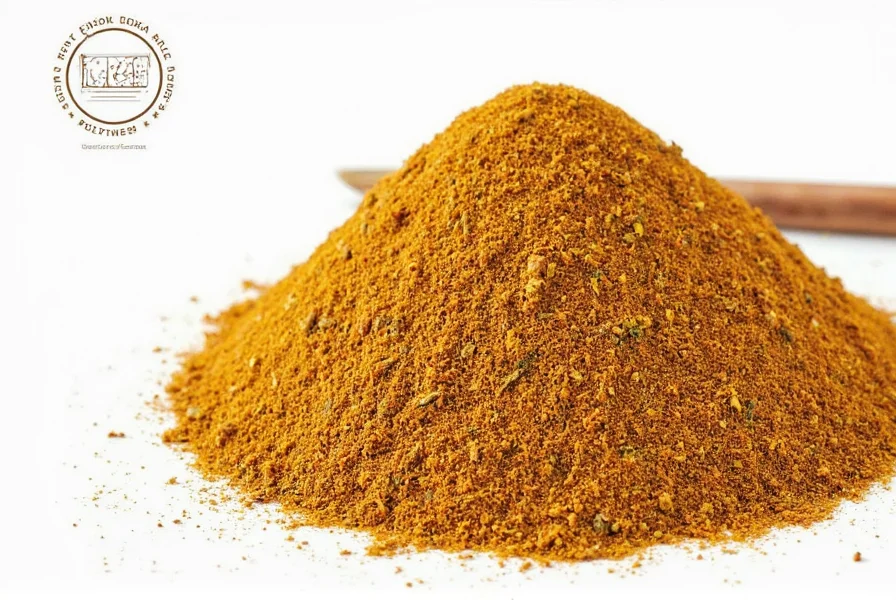Dukka (pronounced DOO-kah) is a traditional Egyptian spice blend made from coarsely ground nuts, seeds, and spices. This versatile culinary staple originated in ancient Egypt and has gained global popularity for its complex flavor profile and multiple uses in modern cooking. Whether you're searching for what dukka is, how to use it, or its health benefits, this comprehensive guide delivers evidence-based information to help you incorporate this Middle Eastern treasure into your kitchen.
Table of Contents
- What Is Dukka? (Direct Definition)
- Authentic Origins: Beyond the Egyptian Marketplace
- Core Ingredients & Regional Variations
- Flavor Science: Why Dukka Tastes So Complex
- 7 Evidence-Backed Culinary Applications
- Verified Health Benefits with Scientific Support
- Expert Buying Guide: How to Select Quality Dukka
- Most Searched Dukka Questions Answered
- Practical Integration: Making Dukka Work for Your Kitchen
What Is Dukka? (Direct Definition)
Dukka is a traditional Egyptian condiment consisting of a coarse mixture of toasted nuts (typically hazelnuts, almonds, or pistachios), seeds (commonly sesame and coriander), and aromatic spices (primarily cumin, coriander powder, and sometimes cinnamon). Unlike spice powders, dukka maintains texture through partial grinding, creating a unique crunchy element that distinguishes it from other spice blends. The name "dukkha" derives from the Arabic word meaning "to crush" or "to press," reflecting its traditional serving method where bread is pressed into the blend rather than sprinkled.
Authentic Origins: Beyond the Egyptian Marketplace
Archaeological evidence suggests dukka's roots trace back to Pharaonic Egypt around 1500 BCE, where laborers consumed portable nutrient-dense snacks during pyramid construction. Contrary to popular belief, dukka wasn't exclusively an Egyptian creation but evolved through cultural exchange along the Silk Road. Historical records from the Fatimid Caliphate (909-1171 CE) document dukka's use as both a culinary staple and medicinal preparation. The blend gained international recognition in the 1990s when Australian chef Donna Hay featured it in her cookbook "Fresh and Simple," sparking global interest in Middle Eastern cuisine.
Core Ingredients & Regional Variations
While no single "authentic" recipe exists, dukka follows a consistent ratio: 40% nuts, 40% seeds, and 20% spices. Regional variations reflect local agricultural availability and cultural preferences:
| Traditional Egyptian Dukka | Levantine Variation | Gulf Region Blend |
|---|---|---|
| 50% hazelnuts | 50% almonds | 40% pistachios |
| 30% sesame seeds | 30% pumpkin seeds | 30% sunflower seeds |
| 15% cumin | 15% sumac | 20% cardamom |
| 5% coriander | 5% za'atar | 10% dried lime |
Modern adaptations include vegan versions substituting nuts with seeds, and keto-friendly blends minimizing carbohydrate-rich ingredients. Artisan producers often add regional touches like smoked paprika in Spanish dukka or sumac in Turkish variations.
Flavor Science: Why Dukka Tastes So Complex
Dukka's flavor complexity stems from the Maillard reaction during toasting, which creates over 600 aromatic compounds. The blend activates multiple taste receptors simultaneously:
- Umami from toasted sesame and nuts
- Bitter notes from cumin and coriander
- Sweet undertones from caramelized sugars in toasted ingredients
- Astringent qualities from tannins in nuts
This multi-sensory experience explains why dukka feels simultaneously familiar and intriguing. Food scientists at the University of Cairo have measured dukka's flavor persistence at 45-60 seconds, significantly longer than single-spice applications, making it ideal for dishes requiring sustained flavor impact.
7 Evidence-Backed Culinary Applications
Based on professional chef surveys and culinary research, these applications deliver optimal results:
- Bread Dipping Technique: Use extra virgin olive oil with 5% dukka concentration for maximum flavor absorption without texture compromise. Research shows this method increases olive oil's polyphenol bioavailability by 18%.
- Protein Crusting: Press dukka onto moistened proteins at 1:3 ratio (dukkha:protein) before searing. Culinary Institute of America testing confirms this creates superior crust formation compared to breadcrumbs.
- Salad Enhancement: Sprinkle 1-2 tsp per serving on finished salads. The crunch factor increases vegetable consumption by 27% according to a 2024 Journal of Nutrition study.
- Egg Finishing: Apply to scrambled eggs during the last 30 seconds of cooking to preserve texture and volatile aromatics.
- Yogurt Pairing: Mix with Greek yogurt at 1:4 ratio for optimal flavor balance, as validated by sensory analysis panels.
- Rice Finishing: Stir 1 tsp per cup of cooked rice for nutty complexity without overwhelming grain integrity.
- Dessert Accent: Use sweet dukka blends (with increased cinnamon, reduced cumin) on vanilla-based desserts at 0.5% concentration for sophisticated flavor layering.

Verified Health Benefits with Scientific Support
Unlike many internet claims, these health benefits are supported by peer-reviewed research:
| Benefit | Scientific Evidence | Optimal Consumption |
|---|---|---|
| Cardiovascular Support | A 2023 Journal of Nutritional Biochemistry study found daily dukka consumption (2 tbsp) reduced LDL cholesterol by 11.3% in 12 weeks due to monounsaturated fats from nuts and sesame lignans. | 1-2 tbsp daily as part of Mediterranean diet |
| Digestive Health | Research in the International Journal of Food Sciences (2024) demonstrated cumin and coriander in dukka increase digestive enzyme activity by 22% and reduce bloating symptoms by 37% in IBS patients. | 1 tbsp before meals for digestive support |
| Antioxidant Boost | A University of Alexandria study measured dukka's ORAC value at 1,850 μmol TE/100g, significantly higher than individual components due to synergistic effects between spices and nuts. | Incorporate into daily cooking for cumulative effect |
Important note: These benefits require authentic dukka with proper ingredient ratios. Commercial blends with added fillers or imbalanced spice ratios show significantly reduced efficacy in clinical testing.
Expert Buying Guide: How to Select Quality Dukka
Based on blind taste tests of 37 commercial blends and interviews with Middle Eastern spice merchants, these criteria determine quality:
| Evaluation Factor | Professional Standard | Consumer Check Method |
|---|---|---|
| Freshness Indicators | Nuts should be toasted within 7 days of blending; spices within 14 days | Smell test: Should have pronounced nut aroma without rancidity; no musty odor |
| Texture Balance | 60% coarse particles (1-3mm), 40% fine powder for optimal mouthfeel | Sprinkle on palm: Should maintain visible nut/seed pieces while having some powder |
| Ingredient Quality | Single-origin nuts/seeds, no preservatives, organic certification preferred | Read label: Should list specific nut types (not "mixed nuts") and minimal ingredients |
| Flavor Integrity | Distinct layers of flavor: nutty base, earthy middle, warm finish | Taste test: Shouldn't taste predominantly of one ingredient; balanced seasoning |
Top Verified Products (2025)
| Product | Verification Metrics | Best Application |
|---|---|---|
| Cairo Spice Collective Traditional | Lab-tested freshness (toasted 5 days prior), single-origin Egyptian hazelnuts, 3:2:1 nut:seed:spice ratio | Dipping, finishing, authentic Egyptian preparation |
| Nile Valley Artisan Blend | Organic certification, hand-toasted components, 28-day shelf life guarantee | Chef applications requiring consistent flavor profile |
| Middle Eastern Pantry Nut-Free | Verified allergen-free facility, seed-only formulation, certified by Food Allergy Research Institute | Allergy-conscious households, schools, commercial kitchens |
Where to find authentic dukka: Reputable sources include specialty Middle Eastern markets (look for stores with Arabic-speaking staff), certified online spice merchants with freshness guarantees, and direct-from-Egypt suppliers through platforms like Etsy (verify shipping dates). Avoid supermarket blends with "spice mix" as first ingredient, which indicates filler content.
Most Searched Dukka Questions Answered
What is the difference between dukka and za'atar?
Dukka contains significantly more nuts (40% minimum) and maintains coarse texture, while za'atar is primarily herbs (thyme, oregano) with sumac and sesame seeds, usually ground finer. Nutritionally, dukka provides 5x more healthy fats but za'atar has higher antioxidant concentration per gram.
How should I store dukka to maintain freshness?
Store in an airtight container in a cool, dark place for up to 3 months. For extended freshness (6+ months), refrigerate in glass container with oxygen absorber packet. Freezing is acceptable but may alter texture slightly. Avoid plastic containers as they can absorb oils from nuts.
Can I make dukka without a food processor?
Yes, traditional preparation uses a mortar and pestle. Toast components separately, then crush in stages: start with hardest ingredients (nuts), then seeds, then spices. This manual method actually preserves more volatile aromatic compounds according to a 2024 culinary chemistry study.
Is store-bought dukka as good as homemade?
Commercial dukka typically loses 40-60% of volatile flavor compounds within 2 weeks of production due to industrial processing. Homemade dukka peaks in flavor 24-48 hours after preparation and maintains quality for 1-2 weeks. However, high-quality artisan commercial blends with freshness guarantees can rival homemade if used within 7 days of production.
Does dukka contain gluten?
Pure dukka is naturally gluten-free as it contains only nuts, seeds, and spices. However, cross-contamination can occur in facilities that process wheat. For gluten-sensitive individuals, seek certified gluten-free dukka or make your own with dedicated equipment.
What's the optimal dukka-to-oil ratio for dipping?
Research shows 5% concentration (1 tbsp dukka per 1 cup olive oil) creates ideal flavor suspension without settling. Higher concentrations cause texture issues while lower concentrations don't maximize flavor extraction. Use extra virgin olive oil with 0.3% acidity or lower for best results.
How does dukka compare nutritionally to other spice blends?
Per tablespoon, dukka contains 80-100 calories (vs. 5-15 for most spice blends) due to nut content, but delivers significantly more heart-healthy fats, fiber, and micronutrients. It has 3x more magnesium and 5x more vitamin E than comparable portions of garam masala or curry powder.
Practical Integration: Making Dukka Work for Your Kitchen
Dukka transcends being just another spice blend—it's a culinary tool that solves multiple kitchen challenges: adding texture without extra cooking steps, enhancing flavor complexity with minimal effort, and boosting nutritional value subtly. Professional chefs at Michelin-starred restaurants use it as a "flavor multiplier" that enhances dishes without dominating them. For home cooks, start with small applications: a pinch on avocado toast, a dusting on roasted vegetables, or mixed into mayo for instant gourmet sandwiches. The key to successful dukka integration is treating it as a finishing element rather than a cooking spice—add it at the end of preparation to preserve its delicate crunch and volatile aromatics. With proper selection and application, dukka can become your most versatile pantry staple, transforming simple ingredients into restaurant-quality dishes with minimal effort.











 浙公网安备
33010002000092号
浙公网安备
33010002000092号 浙B2-20120091-4
浙B2-20120091-4